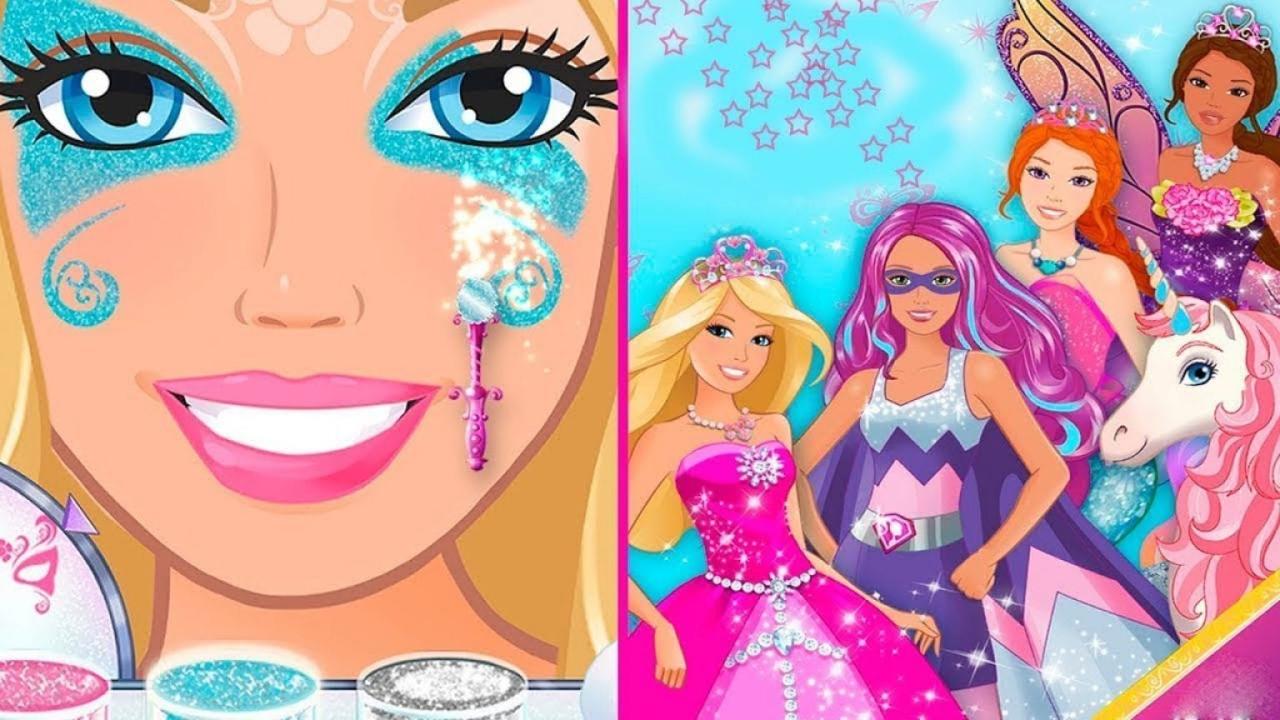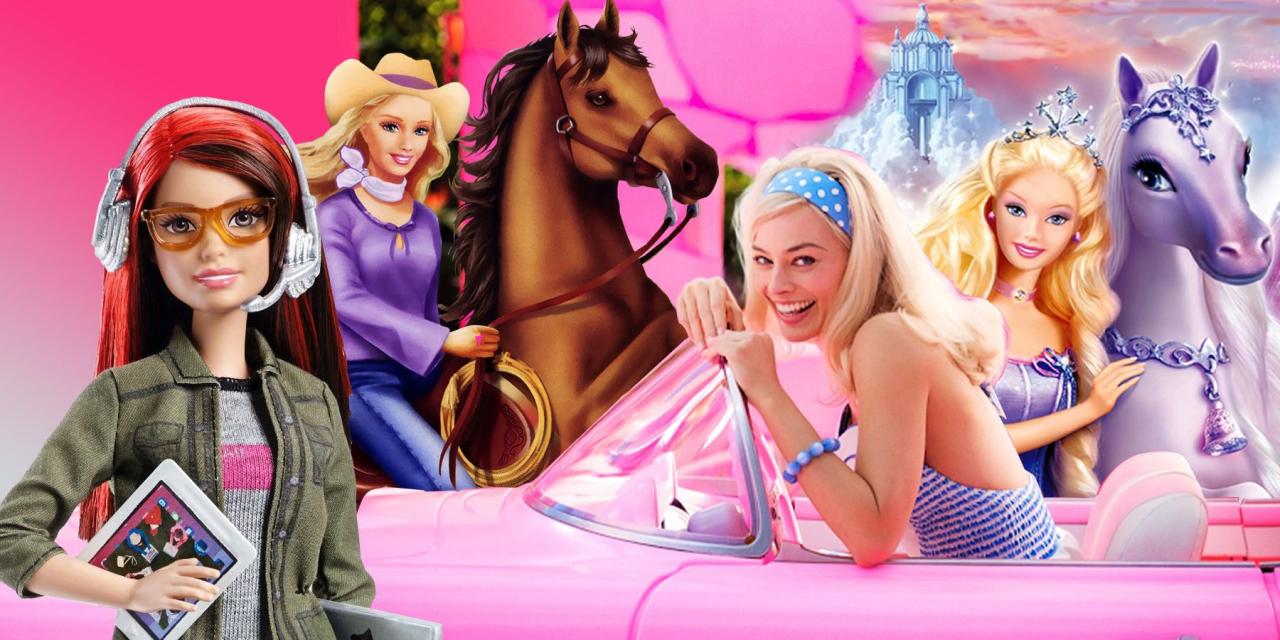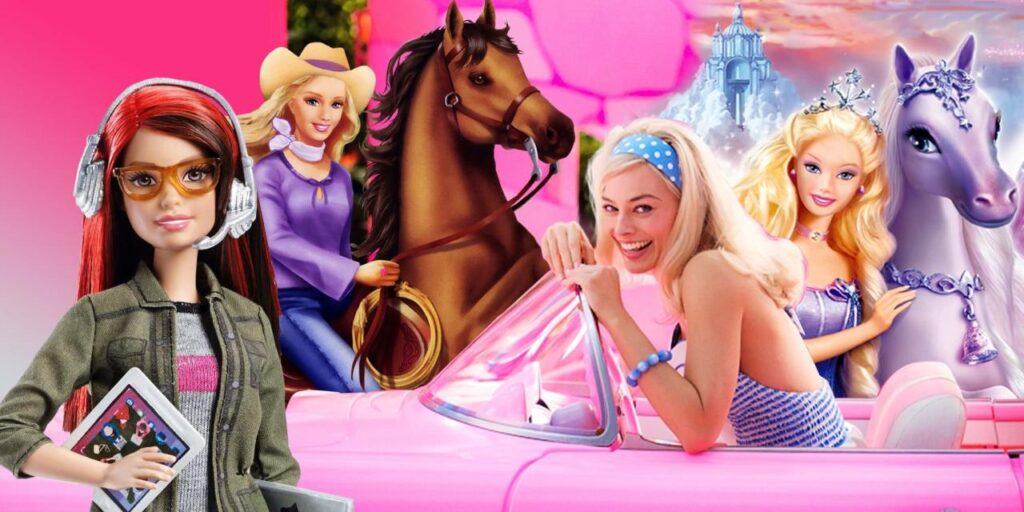Barbie games invite players into a world where creativity and fun know no bounds. These games encompass a variety of genres, each crafted to engage the imagination while offering unique gameplay experiences. From role-playing adventures that allow players to step into Barbie’s shoes, to fashion and design challenges that let them express their style, the appeal of Barbie games is as diverse as it is captivating.
Exploring the mechanics and features of Barbie games reveals what sets them apart. With innovative interactive elements and extensive customization options, these games enhance player engagement and satisfaction. Furthermore, the cultural impact of Barbie games extends to childhood development, showcasing how they reflect societal trends and contribute to learning experiences through play.
Popular Barbie Game Genres

Barbie games have evolved over the years, captivating audiences with diverse themes and engaging gameplay. This section delves into the most popular genres of Barbie games, highlighting their unique characteristics and the elements that draw players into these virtual worlds.
Role-Playing Games, Barbie games
Barbie role-playing games (RPGs) are designed to immerse players in interactive narratives where they can assume the role of Barbie and explore various scenarios. These games typically allow players to customize their characters, choose different paths in the storyline, and engage in quests or missions.
Characteristics that define Barbie RPGs include:
- Character Customization: Players can often change Barbie’s appearance, outfits, and accessories to create a unique avatar that reflects their personality.
- Story-Driven Adventures: Each game usually features a storyline that involves challenges, friendship, and personal growth, engaging players emotionally.
- Exploration and Interaction: Players can navigate different environments, interact with other characters, and make choices that influence the game’s outcome.
Fashion and Design Games
Barbie fashion and design games are among the most appealing genres, drawing in a wide demographic of players who enjoy creativity and self-expression. These games allow players to explore the world of fashion and design, creating outfits, accessories, and even entire fashion shows.
The appeal of Barbie fashion and design games stems from several key factors:
- Creativity Outlet: Players can unleash their imagination by designing clothes and styles, often using a wide range of fabrics, colors, and patterns.
- Trendsetting Experience: The games often include elements of current fashion trends, allowing players to get a sense of what’s fashionable in the real world.
- Social Interaction: Many fashion games allow players to share their creations with friends or even enter competitions, fostering a sense of community and collaboration.
Fashion and design games empower players to express their individuality while engaging with iconic brand aesthetics.
Game Mechanics and Features

Barbie games offer a unique blend of gameplay mechanics that cater to a wide audience, particularly young players interested in fashion, creativity, and adventure. These games not only focus on entertainment but also incorporate educational elements, allowing players to learn through interactive play. The combination of engaging storylines and various gameplay styles makes Barbie games both fun and informative.
One of the standout features in Barbie games is their emphasis on customization. Players can personalize their characters, outfits, and environments, leading to a more immersive gaming experience. This customization typically includes a variety of clothing options, hairstyles, and accessories, which can be mixed and matched to form unique looks. Additionally, the games often allow for customization of settings and characters, providing players with the freedom to express their creativity.
Comparison of Interactive Features
The interactive features in Barbie games set them apart from other titles in the genre. While many games focus solely on linear gameplay, Barbie games incorporate a range of interactive elements that encourage exploration and creativity. The following points highlight the differences between Barbie games and similar titles:
- Character Customization: Barbie games offer extensive options for personalizing characters, unlike many other games that provide limited customization.
- Story-Driven Gameplay: Many Barbie games include rich storylines that engage players, whereas similar games might focus on action or competition without a narrative.
- Creative Building Elements: Players often have the option to design their own virtual spaces or outfits, a feature that is less common in other games.
- Social Interaction: Some Barbie games allow for multiplayer interactions, fostering a sense of community and collaboration among players, which is often not a focus in comparable titles.
These interactive features not only enhance gameplay but also encourage players to think critically and creatively, making the gaming experience more rewarding.
Enhancements Through Customization
Customization options in Barbie games significantly enhance the player experience by allowing for personal expression and creativity. Players can experiment with different fashion styles and design their characters according to their preferences. This level of personalization can motivate players to engage with the game longer, as they seek to create the perfect look or environment.
Additionally, customization is often linked to gameplay progression. For example, unlocking new clothing items or accessories can serve as rewards for completing challenges or levels, making players feel accomplished. This rewards system encourages players to explore and engage more deeply with the game.
“Customization in Barbie games enhances engagement and personal investment, allowing players to create a unique gaming experience that reflects their individuality.”
The visual appeal of the customization options, coupled with the intuitive design of the interfaces, makes it easy for players to navigate and experiment with different styles. This not only improves the overall user experience but also promotes creativity and self-expression, key elements that define the charm of Barbie games.
Cultural Impact of Barbie Games

Barbie games have played a significant role in shaping childhood experiences and reflect broader societal trends. Through engaging gameplay, these games foster creativity, imagination, and social interaction among young players. The evolution of Barbie games not only mirrors changing cultural values but also influences the way children perceive gender roles and aspirations.
Influence on Childhood Development and Learning
Barbie games contribute to various aspects of childhood development, including cognitive and social skills. Engaging with these games allows children to explore different roles and scenarios, helping them develop critical thinking and problem-solving abilities. For instance, a game where players design outfits or plan events encourages creativity and decision-making.
Additionally, Barbie games often incorporate educational elements, from math challenges in fashion design to storytelling in adventure quests. These educational aspects enhance learning while maintaining entertainment value. The interactive nature of these games promotes socialization, as children often play together, sharing ideas and collaborating on tasks, which further aids in their social development.
Reflection of Societal Trends and Gender Roles
Barbie games frequently reflect and influence societal trends regarding gender roles. Originally, Barbie was marketed primarily as a fashion doll, embodying traditional feminine ideals. Over time, Barbie games have evolved to include diverse careers and interests, illustrating the changing perceptions of gender roles in society.
Today, players can engage in games where Barbie is an astronaut, a doctor, or a business leader, showcasing that girls can aspire to various professions beyond conventional expectations. This shift not only empowers young girls to envision themselves in diverse roles but also challenges traditional gender stereotypes.
“Barbie games serve as a platform for young girls to explore their identities and aspirations in a safe and imaginative environment.”
Evolution of Barbie Games Over the Decades
The progression of Barbie games reflects significant changes in both gaming technology and cultural narratives. Beginning with simple board games and early computer games in the late 1980s, Barbie games have dramatically transitioned to sophisticated, interactive experiences on various platforms.
The introduction of mobile gaming and online communities has opened new avenues for Barbie play. Modern games often feature customizable avatars, interactive storylines, and virtual reality experiences that are more aligned with contemporary interests. This evolution not only maintains the relevance of Barbie in youth culture but also adapts to modern themes, including inclusivity and empowerment.
Illustrative of this evolution, a recent Barbie game might feature a storyline where players navigate challenges in a tech startup environment, promoting themes of innovation and entrepreneurship. By embracing current trends, Barbie games continue to resonate with children, inspiring them to pursue their dreams while enjoying engaging gameplay.
If you’re looking to unwind and have some fun, exploring mini games online can be a great option. These games offer a wide variety of challenges that are easy to play yet engaging. Whether you have a few minutes or a couple of hours, you can jump into a game that suits your mood and enjoy some light-hearted competition.
If you’re looking to unwind after a long day, playing mini games online can be a perfect escape. These games offer a variety of genres and styles, catering to different interests and skill levels. Whether you’re into puzzles or action games, there’s something for everyone, making it a fun way to relax and enjoy your free time.


